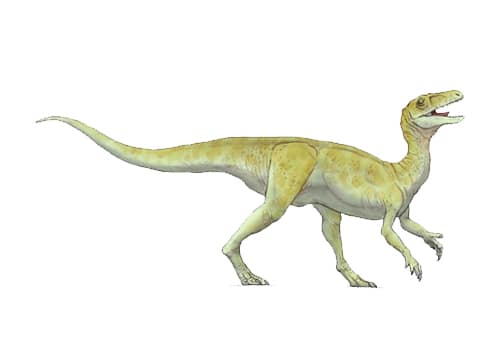Guaibasaurus


Name: Guaibasaurus
Pronounced: Gu-ay-bah-sore-us 
Meaning: Guaiba lizard
Type: Small Theropod
Length: 1.8 - 3 meters long
Diet: Carnivore
Period: Late Triassic
Years: 221-210 million years ago
Location: Brazil
Description: Guaibasaurus is a small, early dinosaur that lived during the Late Triassic Period, about 210 million years ago. It was a member of the sauropodomorph group of dinosaurs, which includes the largest known land animals that ever lived. Guaibasaurus was a small dinosaur, with an estimated length of about 2-3 meters (7-10 feet) and a weight of around 50-100 kg (110-220 lbs). It had a long neck and tail, and walked on four sturdy legs. It had a small head with a beak-like snout and small, peg-like teeth that were likely used for shearing leaves and stems. Guaibasaurus had small, triangular-shaped hands and feet, and may have had claws on its toes. Guaibasaurus is known from a single, partial skeleton that was found in Brazil. This specimen includes parts of the skull, spine, pelvis, and legs. Based on its anatomy, it is thought to have been a herbivorous dinosaur that fed on a diet of plants. Its small size and agile build suggest that it may have been able to move quickly and avoid predators. Guaibasaurus is important because it is one of the earliest known dinosaurs, and helps to shed light on the early evolution of this group of animals. It is thought to be closely related to other early dinosaurs such as Eoraptor and Herrerasaurus.
Loading images from Wikipedia
Loading a Random Dinosaur...


